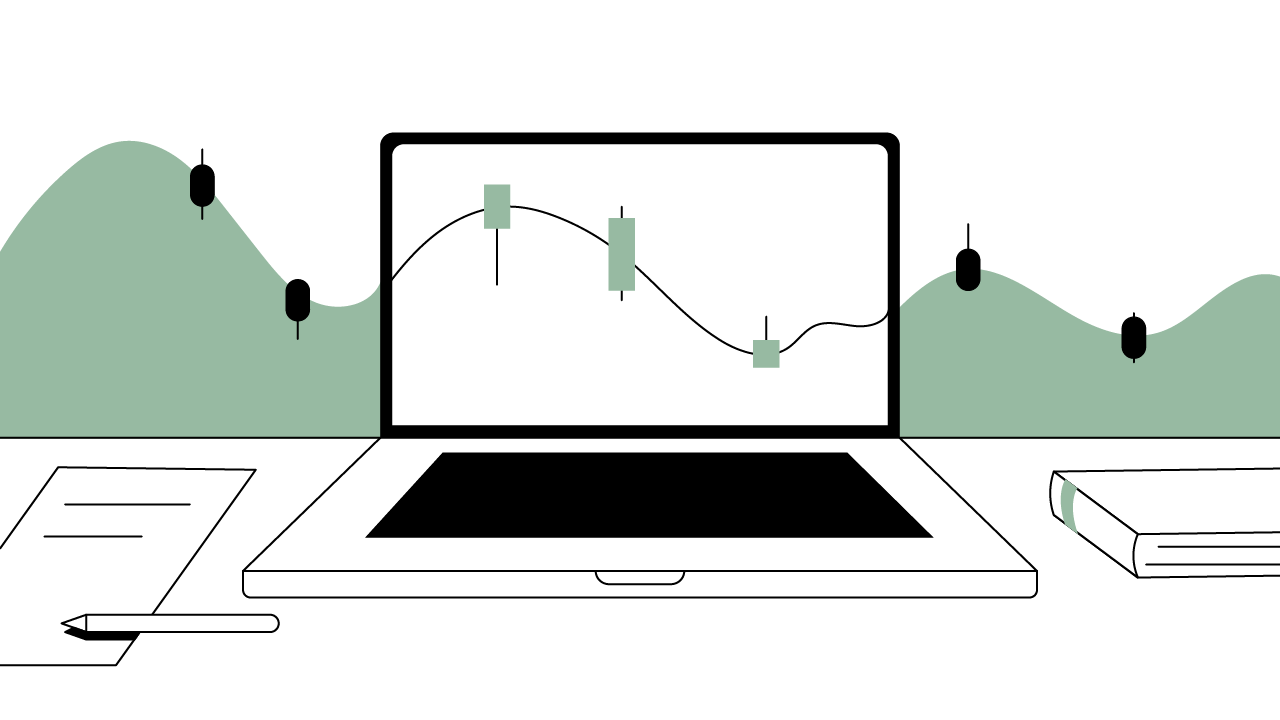Contents
Margin Trading: A Beginner's Guide to Margin Trading Crypto
Read on for a walkthrough of margin trading, including what it is, how it works, and how to use it to your advantage for crypto.
Updated February 12, 2025 • 5 min read

Summary
For beginners, understanding the mechanics, advantages, and risks of margin trading is crucial to success. This guide aims to provide a foundational understanding of margin trading in the crypto market, breaking down the steps involved and offering insights into strategies and risk management.
Margin trading has become a popular strategy among cryptocurrency traders aiming to increase their buying power by borrowing funds to open larger positions. While this approach can amplify profits, it also heightens the risks, particularly in a volatile market like cryptocurrency.
What Is Crypto Margin Trading?
Margin trading allows you to borrow money from a broker or exchange to trade assets. In crypto, this means you can control a larger position than what your initial capital would allow.
Borrowed funds amplify your trade size, and the ratio between the amount you borrow and your deposit is known as leverage. For example, using 5:1 leverage means that you control five dollars' worth of cryptocurrency for every dollar you invest.
Unlock the future of money on Gemini
Start your crypto journey in minutes on the trusted crypto-native finance platform
Unlike spot trading, where traders use only their own capital, margin trading increases potential profits and losses. A well-executed trade can generate significant returns — but if the market moves against your position, losses can exceed your initial investment.
Understanding leverage and its effects is essential before entering margin trades, especially in the volatile world of cryptocurrency, where price fluctuations can be rapid and unpredictable.
How Does Margin Trading Work?
To begin margin trading, the first step is choosing a crypto platform that offers this feature.
Choosing the right platform is vital, as the available tools and features can significantly impact your trading experience. Factors like security features, leverage options, and transaction fees should all be considered. Gemini is a secure way to buy, sell, store, and convert crypto, and millions of people use Gemini to diversify their portfolios. We’re a full-reserve and highly-regulated cryptocurrency exchange and custodian, giving you the ultimate piece of mind.
Once you’ve selected a platform, creating an account is usually straightforward. Most exchanges require users to complete a verification process (Know Your Customer), which involves submitting identification documents.
After verifying your account, you can deposit funds — either fiat or cryptocurrency — into your margin account. This deposit of digital assets acts as collateral for the borrowed money.
When placing a margin trade, the first step is deciding how much leverage to use. Traders can go long if they expect the price to rise or short if they anticipate a decline. A long position means you're buying the asset, expecting its value to increase.
A short position, on the other hand, involves selling a crypto asset you don’t own and planning to buy it back later at a lower price.
Alongside this, traders often set stop-loss and take-profit orders. These automated actions trigger if the price reaches a certain point, helping to manage risks by locking in gains or limiting losses.
What Are the Pros and Cons of Margin Trading?
Margin trading offers several advantages, particularly for traders looking to maximize their returns.
One of the main benefits is the ability to amplify profits. Using leverage, traders can control a larger position than they would with their own capital alone. This can lead to substantial gains if the market moves in your favor.
Additionally, margin trading allows for flexibility in market conditions, enabling traders to profit from both rising and falling markets by taking long or short positions. This is particularly useful during periods of high volatility, which is common in the cryptocurrency market.
However, the same leverage that amplifies profits can also amplify losses. In margin trading, even a small unfavorable price movement can result in significant losses. If your account balance falls below the required maintenance margin, the exchange may issue a margin call, demanding additional funds to cover your position.
Failing to meet a margin call can lead to liquidation, where the exchange sells your assets to cover the losses. This can result in the loss of your entire deposit, making margin trading a high-risk strategy.
Another drawback is the interest and fees associated with borrowing funds. Each platform charges fees for margin trading, which can vary depending on the exchange and the amount borrowed.
These costs, combined with the inherent risks of trading in a volatile market, mean that margin trading is best suited for experienced traders who are comfortable managing risk.
What Are the Main Types of Margin Trading Strategies?
One of the fundamental choices in margin trading is deciding whether to take a long or short position.
A long position is based on the assumption that a cryptocurrency's price will rise, while a short position involves betting that the price will fall. These strategies offer unique opportunities depending on market conditions, and understanding when and how to apply each is essential for success in margin trading.
Long and Short Positions
Margin trading enables traders to utilize both long and short positions, depending on their outlook for the market:
Long Position: When a trader expects the price of a cryptocurrency to increase, they take a long position. In this strategy, they borrow additional funds to buy more of the cryptocurrency than they could with their capital alone. If the price of the cryptocurrency rises as anticipated, the trader can sell the asset at a higher price, repay the loan, and keep the profit.
Short Position: In contrast, a short position involves borrowing the asset and selling it immediately, with the hope that its price will fall. If the price declines as predicted, the trader can buy back the asset at the lower price, return the borrowed amount, and pocket the difference as profit.
Both long and short positions are useful for capitalizing on different market trends, allowing traders to profit whether the market is bullish or bearish. The choice between these strategies depends on your market analysis and risk tolerance.
Whether taking long or short positions or using isolated margin trading versus cross-margin trading, success in margin trading depends on a deep understanding of market dynamics, effective risk management, and careful planning.
Employing strategies such as stop-loss, take-profit orders, and diversification can help traders navigate the complexities of margin trading while minimizing risk.
What Are the Risks of Margin Trading in Crypto?
Cryptocurrency markets are notoriously volatile, which can make margin trading particularly risky.
Volatility in the cryptocurrency market can cause sudden price swings, increasing the likelihood of a margin call or liquidation. Traders need to be prepared for rapid price fluctuations, as even small changes in the market can have a significant impact when leverage is involved.
Margin calls are one of the biggest risks in margin trading. If the value of your position falls below a certain threshold, the exchange will issue a margin call, requiring you to deposit more funds to maintain your position.
If you’re unable to meet the margin call, your position may be liquidated, resulting in the loss of your initial investment. This makes it essential to monitor your positions closely and have a clear strategy in place to manage potential losses.
Another consideration is the interest charged on borrowed funds. When you borrow money to trade on margin, you’re required to pay interest on the borrowed amount.
If you hold a position for an extended period, these interest charges can accumulate, eating into your profits and potentially turning a winning trade into a losing one.
What Are Some Best Practices for New Traders?
For beginners, it’s important to approach margin trading with caution. Start small, using lower leverage until you become more comfortable with the mechanics of trading. Higher leverage increases both the potential for profit and the risk of loss, so it’s wise to begin with a conservative approach.
Conduct thorough research before placing any trades. This includes not only understanding the assets you’re trading but also staying up-to-date with market trends and news that could impact the price of cryptocurrencies.
Technical analysis can help you identify potential entry and exit points, while fundamental analysis can provide insight into the broader market factors influencing price movements.
Another key to success is constantly reviewing and adjusting your positions. Market conditions can change rapidly, and what was a profitable trade can quickly turn into a loss if you’re not paying attention.
Regularly reviewing your stop-loss and take-profit orders ensures that your positions are aligned with current market trends and reduces the likelihood of unexpected losses.
The Bottom Line
Margin trading in cryptocurrency offers the potential for significant gains, but also comes with heightened risks. For beginners, it’s essential to understand the mechanics of margin trading, from choosing a platform and setting up an account to managing leverage and risk.
Start small, use effective risk management strategies, and continually educate yourself to navigate the complexities of margin trading successfully.
By taking a cautious approach and remaining informed, you can make the most of this powerful trading tool while minimizing the risks involved. If you’re ready to get started with a secure crypto platform, choose Gemini.
Cryptopedia does not guarantee the reliability of the Site content and shall not be held liable for any errors, omissions, or inaccuracies. The opinions and views expressed in any Cryptopedia article are solely those of the author(s) and do not reflect the opinions of Gemini or its management. The information provided on the Site is for informational purposes only, and it does not constitute an endorsement of any of the products and services discussed or investment, financial, or trading advice. A qualified professional should be consulted prior to making financial decisions. Please visit our Cryptopedia Site Policy to learn more.

Is this article helpful?


